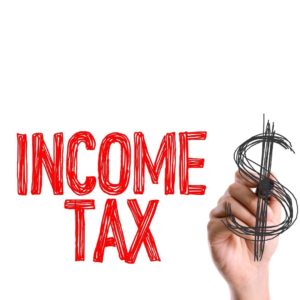Small Business Accounting
How to get ready for Tax Time
 Small business owners will have a never ending TO DO list in addition to performing the services/or sales of their business.
Small business owners will have a never ending TO DO list in addition to performing the services/or sales of their business.
One of those items on the TO DO list is performing the accounting for your small business.
Bookkeeping is something that you either must learn or outsource when you are running a business.
Whether you choose to work with an accountant on a weekly, monthly, quarterly, or annual basis, it is one of the most important steps in running a successful business. You must have knowledge of your Income, Expenses, Budgets, Forecasting, and Tax Obligations.
We work with Small Businesses and advise them on the best way to set up a bookkeeping and accounting system.
Depending upon the size of your business, you may choose
- Manual bookkeeping method with a spreadsheet
- DIY program such as Online QuickBooks or other accounting program
- Hire an accounting office to assist in preparing your monthly financial statements
The route you decide to take will depend upon the size of your business and your time and expertise and will change as your business grows. We work with our clients through these steps and guide them to find the best method for their business.
STEP ONE – Don’t wait until TAX PREPARATION TIME – to review your business financials.
STEP TWO – Decide how you will keep track of your accounting. We have a variety of packages that we offer to our Small Business Accounting clients to assist you in preparing your accounting information.
STEP THREE – Work on your small business accounting and preparation of your financials on a timely basis.
 Preparation of your Income and Expense or Profit and Loss Statement
Preparation of your Income and Expense or Profit and Loss Statement
- INCOME – track your income from performing services or selling your product. Income is money received from your customers or clients.
Other inflow of cash – business loans, contributions by business owner – these are not income and should not be tracked on the Income and Expense Statement.
- EXPENSES – track your businesses expenses and make sure that you keep your receipts.
This is money spent on expenses whether the money is from sales, business loan, or contribution from the owner. If you pay back business loan or money back to the owner – these are not expenses.
The foundation of solid business bookkeeping is effective and accurate expense tracking. It is a crucial step that lets you monitor the growth of your business, prepare the financial statements, keep track of deductible expenses, prepare the tax return, and legitimize your filings.
Establish an accounting system for organizing receipts and other important documents. You may keep actual invoices and receipts organized in a folder or use software that allows you to scan and store online or on your computer.
What Can I Deduct?
To be deductible, per the IRS, a business expense must be both ordinary and necessary. An ordinary expense is one that is common and accepted in your trade or business. A necessary expense is one that is helpful and appropriate for your trade or business. An expense does not have to be indispensable to be considered necessary.
Some expenses to pay particular attention to:
Mileage & vehicle expenses
The IRS Standard Mileage rate for 2023 is 65.5 cents and 2024 is 67 cents for every business mile driven. Although a daily commute is not considered a travel expense, logged miles can be claimed as a tax deduction for business purposes. This is the standard expense method used for expensable auto deduction. You can also deduct your vehicle usage by taking the cost of the vehicle and taking the percentage of the time you used the vehicle for work purposes, which is considered the actual expense method.
Actual expense method example
When using the actual expense method, you’ll add up all the expenses for your vehicle that year (miles, cost to purchase, oil changes, etc.) and multiply that total number by the amount of time you used the vehicle for business purposes. For example, if you paid $5,000 in expenses for your vehicle and determined you used it 20% of the time you could claim $1,000 as a deduction. Note – any company that has 5 or more vehicles must use the actual expense method.
Standard expense method example
You can also use the standard expense method, which is less detailed and much easier to calculate, so long as you track mileage. To discover this number, you need to track your miles from the beginning to the end of the calendar year and multiply by the credited monetary amount 62.5 cents for 2022 (65.5 cents for 2023). For example, if you drove 2,000 miles for work you would deduct $1,250 (2,000 X 0.625).
You must keep a detailed record of the mileage you used your vehicle for business purpose, since documentation will be key for filing this deduction and in the event of an audit. There are many Apps that you may utilize on your phone to assist in tracking.
Meals and Entertainment expenses
It is very common for business owners to incur a meal expense when taking clients and employees out for a business meal. Business meal expenses fall under the umbrella of entertainment. Entertainment expenses can be tax deductible if they are associated with business operations and serve a specific business purpose. You will get either a 50% deduction or a 100% deduction depending on the entertainment expense. For holiday parties, meals provided to employees or meals available to the public, can qualify for a 100% deduction (as long as the parties aren’t excessively extravagant).
If you’re taking a client to lunch, attending a business seminar, or eating directly with stockholders you can get a 50% deduction on associated costs.
IMPORTANT TO NOTE: The Consolidated Appropriations Act, 2021, increased the business-meal deduction for the cost of food and beverages provided by a restaurant from 50 percent to 100 percent in 2021 and 2022, if certain conditions are met.
The notice clarifies that the 100 percent deduction is available for food or beverages provided by a restaurant,” wrote Kathleen King, managing director at professional services firm Alvarez & Marsal in Washington, D.C. “A restaurant does not include businesses that primarily sell pre-packaged food or beverages not for immediate consumption. The notice specifically calls out grocery stores, specialty food stores, liquor stores, convenience stores, vending machines and kiosks as examples of businesses likely to primarily sell pre-packaged items.”
Many business owners want to connect with their clients at concerts, through trips or sports events. Previously you could deduct up to 50% of entertainment expenses but as of 2018 you will not be allowed a tax deduction for entertainment event business expenses. Changes can be made to these requirements yearly, so you’ll want to make sure to check updated guidelines for newly adjusted tax limitations.
Rent & utilities
You can deduct the rent you’re paying if you are using the property for business purposes, but if you’re paying rent on a property, you will eventually own (rent-to-own) the rent is not deductible. This deductible expense also includes rented office furniture and utility fees you pay to maintain your business.
Marketing expenses
We know that your marketing costs can add up. You can deduct any marketing expenses that promote your product or business’s offering (websites, billboards, mail, etc.) and you can also deduct sponsored advertisements for charity, such as creating advertising materials that sponsor a charity drive. In addition, any survey administration costs, and public relations efforts are considered tax deductible business expenses.
Employees pay & benefits
Business owners can deduct employee pay, which includes base salary, bonuses, and any additional commissions paid.
General office expenses
The following list details the most common tax write-offs as deductible business expenses, but there are still additional deductions you can make for your business. Office expenses can be significant for a small business owner, and you’re able to claim purchases that serve a specific business purpose. Some of these deductible business expenses include:
- Bank fees and interest
- Business insurance
- Software
- Office furniture & supplies for the workplace (soap, toilet paper, etc.)
- Memberships & subscriptions
- Legal fees
This is by no means an exhaustive list of deductible expenses, and we encourage all business leaders to work closely with their finance teams or accountant to maximize their business tax deductions.
Capital Expenses
You must capitalize, rather than deduct, some costs. These costs are a part of your investment in your business and are called capital expenses. Capital expenses are considered assets in your business. In general, there are three types of costs you capitalize.
- Business start-up costs (See the note below)
- Business assets
- Improvements
Note: You can elect to deduct or amortize certain business start-up costs
Personal versus Business Expenses
Generally, you cannot deduct personal, living, or family expenses. However, if you have an expense for something that is used partly for business and partly for personal purposes, divide the total cost between the business and personal parts. You can deduct the business part.
For example, if you borrow money and use 70% of it for business and the other 30% for a family vacation, you can deduct 70% of the interest as a business expense. The remaining 30% is personal interest and is not deductible.
Business Use of Your Home
If you use part of your home for business, you may be able to deduct expenses for the business use of your home. These expenses may include mortgage interest, insurance, utilities, repairs, and depreciation
 Income minus Expenses equals NET INCOME.
Income minus Expenses equals NET INCOME.
Determine your Tax Liability.
Your tax liability is just how much you owe in taxes.
A consultation with our office should be made to determine what type of entity you are and what your potential tax liability may be.
Net Income is added to your other income on your tax return and may be subject to Federal Tax, State Tax and Self-Employment Tax.
Our office has years of expertise in determining the best entity for your business, making sure you include all credit and deductions, and determining your tax liability.
Tax liability will include:
Income tax – both Federal and State
Self-Employment Tax
Other taxes:
If you hire employees, you will have to pay the payroll taxes due.
Sales tax as applicable to your business
It is your responsibility to set aside the money from your earnings to pay these taxes as they become due.
 Saving for Taxes:
Saving for Taxes:
First step is creating a budget/or forecast of what you may earn for the year. Keep careful track of Income and Expenses. On a monthly basis prepare your financial statement Profit and Loss as previously discussed. Compare it to your Forecast/Budget to see how you are tracking.
As a rule, we suggest you take 30%-40% of your Net Income and set it aside for your tax payments. Another suggestion is to set up a 2nd Business Account – outside of your bank – so it is not easily transferrable back to your business account – and transfer the 30%-40% of the Net Income so it is available to pay estimated tax payments throughout the year.
Another helpful savings tool is to start saving 1% of your Sales per month and set up a 3rd Business Account – again outside of your bank – and transfer 1% of your Sales per month. As you grow you could increase this to 5% then 10%.
By using these savings tools, you will reserve the money to pay the taxes on your business as they become due, as well as a savings account for unexpected business expenses.
Making estimated tax payments
Many business owners think that the income tax payment deadline is on “Tax Day,” which falls in mid-April. However, federal income taxes must be paid as they are incurred. This means that most small businesses must make estimated tax payments throughout the year based on an estimate of their total taxable income at the end of the year.
We are here to consult with Small Business Owners to determine the amount of the estimated payments that they should pay throughout the year. We consult with clients and provide tips to make sure they are saving the right amount of money to cover their yearend tax obligation.
Please note: It is very important to understand that each TAXPAYER’S situation is unique. The amount of taxes that you owe is complicated and is dependent upon a many different factors and is completely different for each TAXPAYER.
If you underpay your taxes:
According to the IRS, as long as you pay 100% in the present year of what you paid the previous year in quarterly estimated taxes, you can’t be penalized for underpaying—even if that amount turns out to be too low. This is sometimes called the safe harbor rule.
If your income is over $150,000, however, you must pay 110% of last year’s income—or 90% of the current year’s income—to qualify for safe harbor.
If you overpay your taxes:
If you overpay your estimated taxes, you will be eligible for a refund. You may choose to receive the refund, or you may apply to the next year’s taxes therefore lessening the amount you have to pay in for estimated taxes in the subsequent year.
